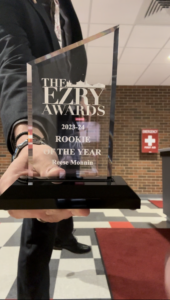A core tenet of a free society is the ability to express one’s self. So basic and fundamental is the freedom of speech that our founders made it the first amendment to the Bill of Rights. It is so ingrained in our culture that we hardly ever give a second thought to it.
But freedom of speech is more complex than being able to say something someone might not like, and it doesn’t necessarily protect the speaker from the effects of his or her speech. Simply put, freedom of speech is not freedom from consequence. Or is it?
Last week, the Kansas Court of Appeals ruled that a student expelled for violent and threatening Facebook posts must be reinstated. The student, Navid Yeasin, was officially expelled for violating the Student Code of Conduct by making sexually demeaning and degrading posts about his former girlfriend and threatening her over social media. Not surprisingly, Yeasin sued the school. Yeasin eventually won his case on appeal, but not because his free speech rights were allegedly violated.
Yeasin won the appeal on a technicality. His postings and tweets, while called “reprehensible, demeaning and criminal behavior” by the Douglas County District Court, were ruled to not technically violate the school’s student code because he made the postings off campus and away from other university-sponsored events. On one occasion, Yeasin locked his former girlfriend in his car and drove around ranting at her, refusing to let her out of the car, despite her constant pleas to do so. The court did not address the matter of whether or not Yeasin’s posts were legitimate threats or if he should face any criminal charges.
But that may not matter. Earlier this year, the Supreme Court reversed the conviction of Anthony Elonis, who made threatening Facebook posts about killing his wife, police officers and, oddly enough, a classroom full of kindergartners. He argued, unsuccessfully at first, that his postings were therapeutic poetry.
An aspiring rapper himself, Elonis cited the lyrics of Eminem as a precedent, and argued that his freedom of speech protected his postings as art. A jury convicted him, stating that any reasonable person would view the postings as a threat. The Supreme Court reversed this decision on the grounds that the lower court had not sufficiently instructed the jury to consider that Elonis did not actually mean what he said.
But is “I didn’t mean it” sufficient insulation from consequence? Courts have upheld laws that prohibit threatening speech, speech designed to incite violence and speech that causes panic in the absence of credible threats such as yelling “Fire!” in a theater. If causing panic and emotional distress is not permissible in those cases, what is the difference in these? That the speech occurs in the digital realm and not in any physical space doesn’t negate that the speech occurred. Allowing “lol, jk” as a permissible defense where social media is involved indicates that threats are more protected than the right to not live in fear of violence.







